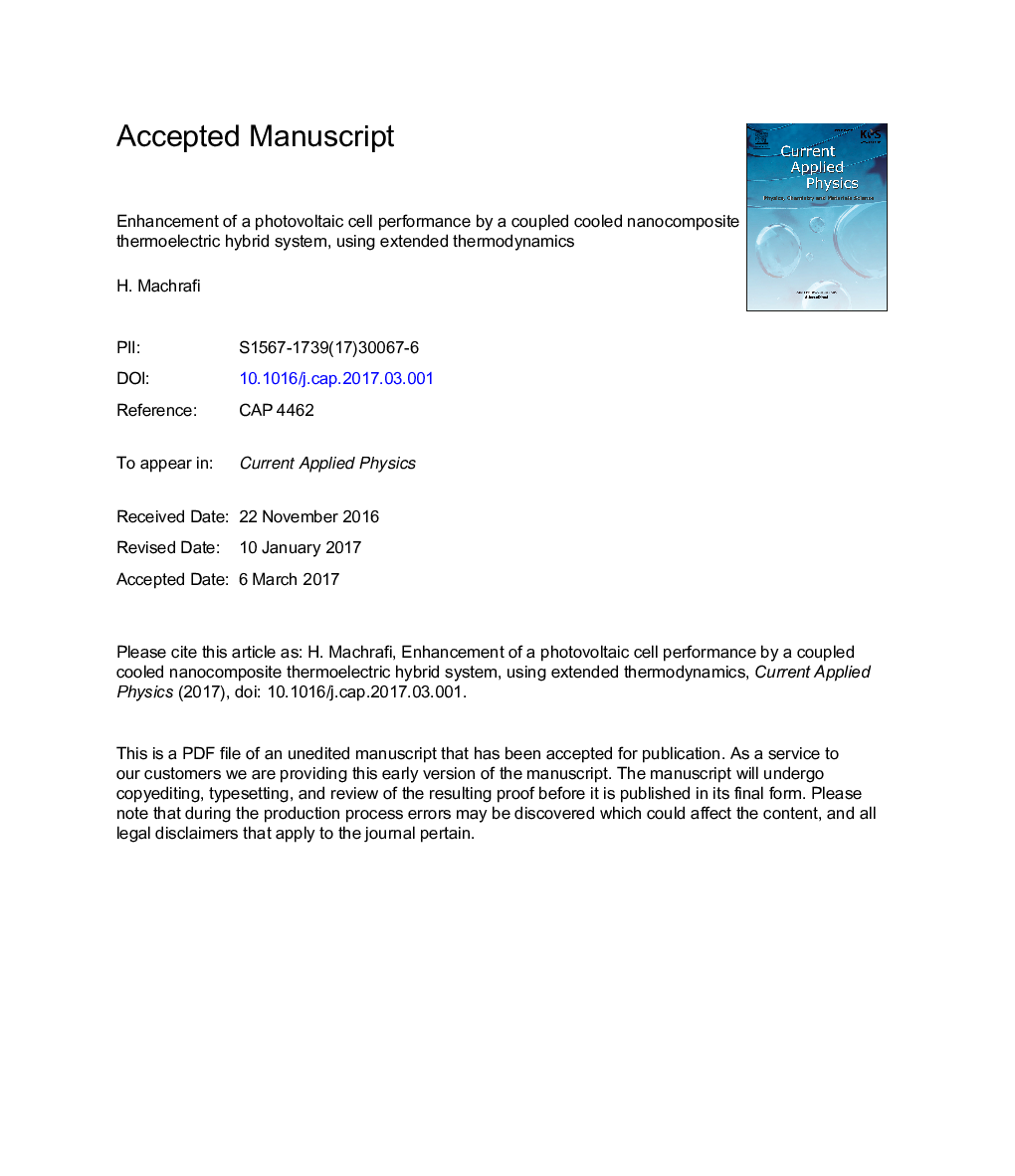| Article ID | Journal | Published Year | Pages | File Type |
|---|---|---|---|---|
| 5488979 | Current Applied Physics | 2017 | 42 Pages |
Abstract
A new analytical mathematical model is developed, describing a cooled photovoltaic-thermoelectric hybrid system. The thermoelectric material is a nanocomposite where the model takes into account size-dependent non-local thermoelectric properties from an extended thermodynamic point of view. The photovoltaic device powers also the cooling system. The model determines first the optimum thickness of the photovoltaic device, then studies the influence of several size-related parameters on the thermoelectric efficiency (also related to the figure of merit) and finally, coupled to a cooling device, the overall efficiency. For the photovoltaic part, the model is applied to two materials, mono-crystalline and poly-crystalline silicon. The thermoelectric part of the model is applied to an n-leg nanocomposite made out of Sb2Te3 nanoparticles in a Bi2Te3 matrix and of a p-leg nanocomposite made out of Bi2Se3 nanoparticles in a Bi2Te3 matrix. An optimal total photovoltaic device size has been found to be around 127 μm and 1.25 μm for the mono- and poly-crystalline silicon, respectively, leading to efficiencies up to 20%, depending on photovoltaic recombination characteristics. With the cooling device, the overall efficiency was increased by up to an additional 10% (an increase of almost 50%), leading to overall efficiencies around 25%.
Related Topics
Physical Sciences and Engineering
Physics and Astronomy
Condensed Matter Physics
Authors
Hatim Machrafi,
